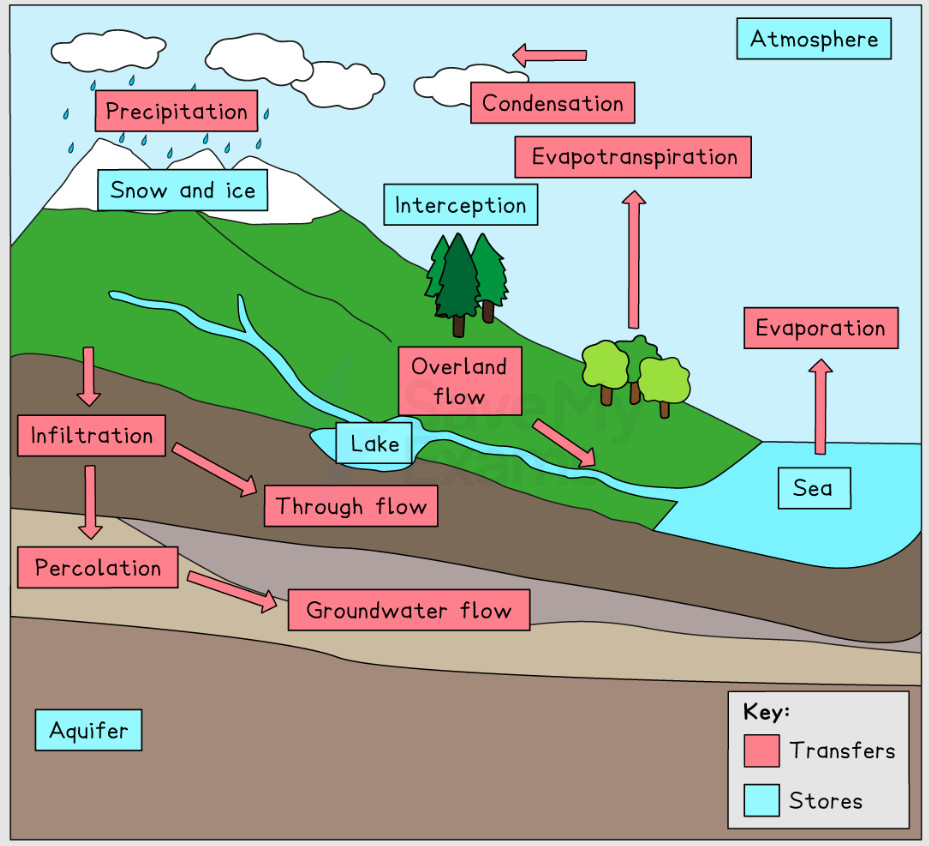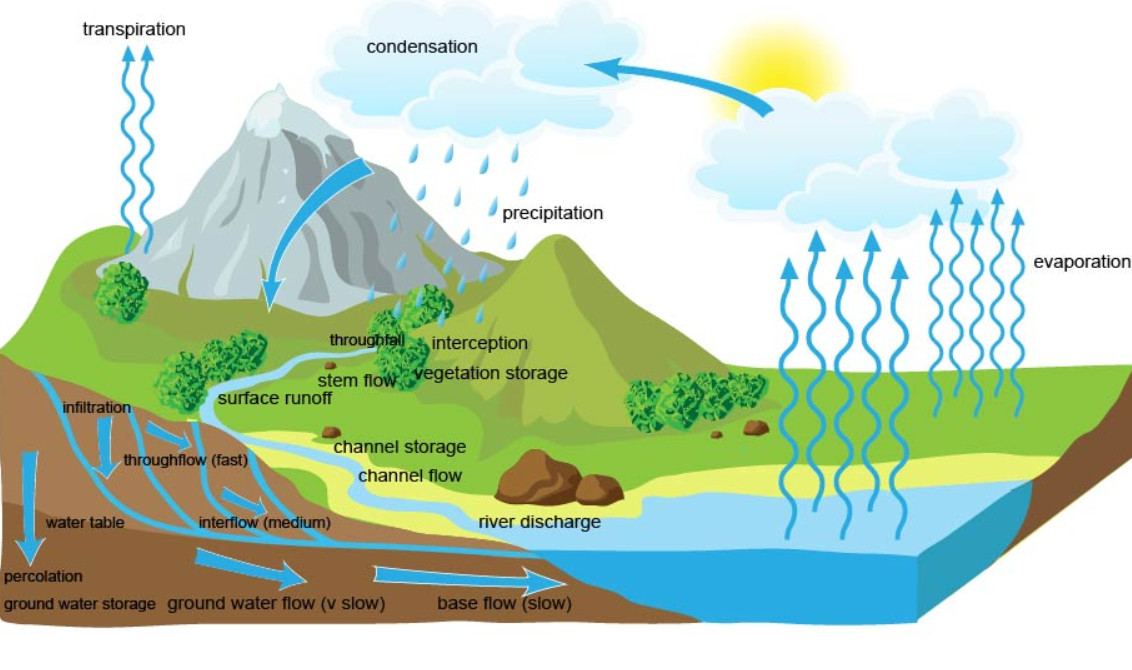What is the Hydrological Cycle? #
The hydrological cycle is the continuous movement of water through the Earth’s atmosphere, land, and oceans. It is powered by energy from the sun and gravity. This cycle has no beginning or end – water simply moves from one place to another in different forms.
Water can exist in three states during this cycle: liquid water, water vapor (gas), and ice (solid). The cycle connects all water on Earth and makes life possible.

Main Processes in the Hydrological Cycle #
1. Evaporation #
Evaporation happens when the sun heats water in oceans, lakes, and rivers. The water changes from liquid to water vapor and rises into the atmosphere. About 86% of all evaporation comes from the oceans because they cover about 70% of Earth’s surface.
Real-World Example: #
On a hot day, you can see puddles of water slowly disappearing. The sun’s heat is turning the liquid water into invisible water vapor that rises into the air.
2. Transpiration #
Transpiration is when plants release water vapor through their leaves. Plants take water from the soil through their roots and release it into the atmosphere. Together with evaporation, this process is called evapotranspiration.
3. Condensation #
Condensation occurs when water vapor in the atmosphere cools down and changes back into tiny water droplets. These droplets form clouds and fog. This happens because cool air cannot hold as much water vapor as warm air.
4. Precipitation #
Precipitation is when water falls from clouds to the Earth’s surface. This can be rain, snow, sleet, or hail. Precipitation happens when water droplets in clouds become too heavy to stay in the air.
5. Infiltration #
Infiltration is when water soaks into the ground through soil and rocks. Some of this water is stored underground as groundwater. The rate of infiltration depends on the type of soil and rock.
6. Surface Runoff #
Surface runoff occurs when water flows over the land surface toward rivers, lakes, and oceans. This happens when the ground is already full of water (saturated), the ground is too hard for water to soak in, or when precipitation is too heavy for the ground to absorb quickly.
The Complete Cycle – Step by Step #
- Sun heats water in oceans, lakes, and rivers
- Water evaporates and plants release water vapor (transpiration)
- Water vapor rises into the atmosphere
- Water vapor cools and condenses to form clouds
- Water falls as precipitation (rain, snow, etc.)
- Some water infiltrates into the ground
- Some water flows as surface runoff into rivers
- Rivers carry water back to oceans
- The cycle starts again
Why the Hydrological Cycle Matters for Geography #
The cycle affects: #
- Climate and Weather: The cycle creates different weather patterns around the world
- River Systems: Rivers are fed by precipitation and groundwater from this cycle
- Water Supply: All fresh water for human use comes from this cycle
- Agriculture: Farmers depend on precipitation and soil moisture from this cycle
- Ecosystems: All living things depend on water from this cycle
Connection to River Studies #
Understanding the hydrological cycle is crucial for studying rivers because:
Rivers are part of the surface runoff process – they collect water that cannot infiltrate into the ground and carry it back to the oceans. The amount of water in rivers depends on how much precipitation falls and how much water infiltrates versus running off the surface.
All the water in rivers originally came from precipitation, which is part of the hydrological cycle. This means river flow changes with seasons and weather patterns.
Some 496,000 cubic kilometers of water evaporates from the land and ocean surface each year, staying in the atmosphere for about 10 days on average before falling as precipitation. Most of the water that evaporates from the oceans (about 90%) falls back into the oceans as precipitation. Only about 10% of the water evaporated from the oceans is transported over land and falls as precipitation there.





